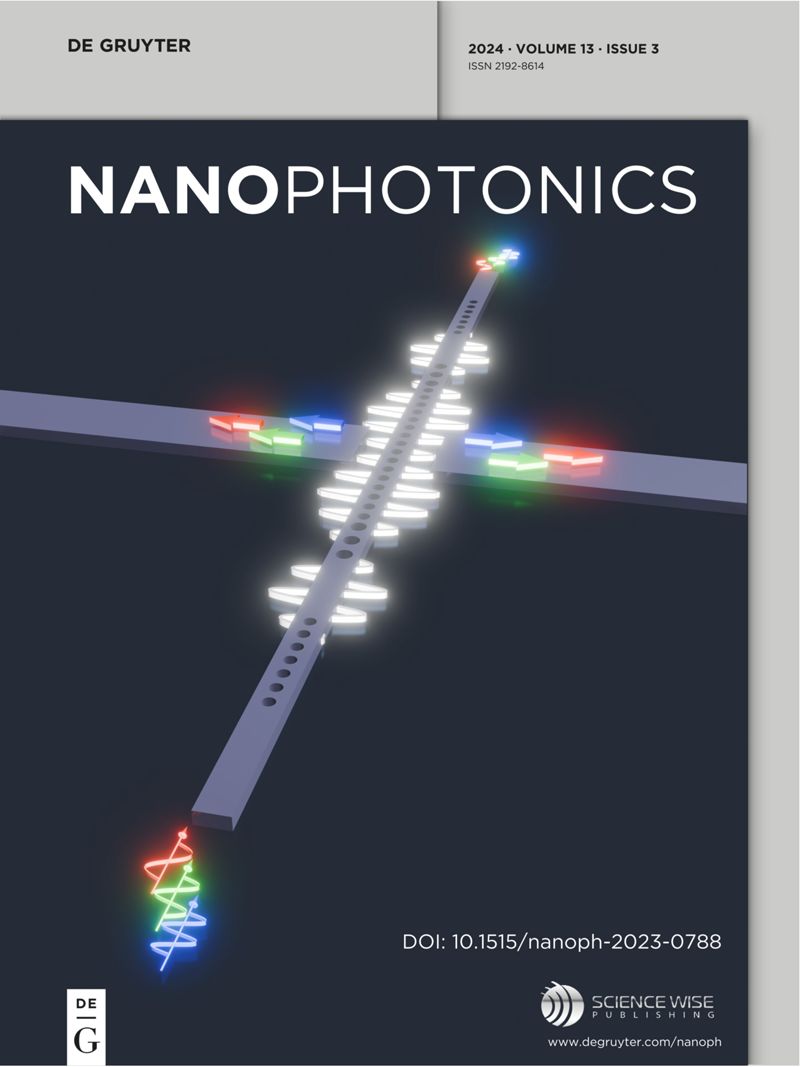Polarization spatial diversity and multiplexing MIMO surface enabled by graphene for terahertz communications
IF 6.6
2区 物理与天体物理
Q1 MATERIALS SCIENCE, MULTIDISCIPLINARY
引用次数: 0
Abstract
The terahertz (THz) frequency band has abundant spectrum resources, which is suitable for constructing communication systems with ultra-high data rates and extremely low latency. Multiple input multiple output (MIMO) devices are crucial for realizing THz communication, and the synchronous transmission and noncorrelation of different channels are the keys to MIMO technology. This paper proposes a graphene-based polarization spatial diversity and multiplexing MIMO surface (PDM-MIMOS) with 2 × 2 metasurface arrays. Dual-polarized channels can be modulated synchronously by the same metasurface modulator and received by the receiver (RX) without crosstalk. Experimental results demonstrate that the modulation cut-off frequency can reach up to 30 kHz. By constructing a continuous THz wave communication system, it is demonstrated that PDM-MIMOS can achieve spatial diversity and multiplexing, thereby improving communication quality and data rate. Furthermore, we compare the signal quality of THz communication and visible light communication under villainous weather conditions. The experiment proves that the communication reliability of THz communication is 19.4 times that of visible light communication. This work offers potential for compact, dual-polarized modulators that can be applied in THz communication, detection, and imaging.用于太赫兹通信的石墨烯极化空间分集和多路MIMO表面
太赫兹(THz)频段具有丰富的频谱资源,适合构建超高数据速率和极低时延的通信系统。多输入多输出(MIMO)器件是实现太赫兹通信的关键,而不同信道的同步传输和不相关是MIMO技术的关键。提出了一种基于石墨烯的2 × 2超表面阵列极化空间分集复用MIMO表面(PDM-MIMOS)。双极化信道可以由同一个超表面调制器同步调制,由接收机(RX)接收,无串扰。实验结果表明,该调制截止频率可达30 kHz。通过构建连续太赫兹波通信系统,证明PDM-MIMOS能够实现空间分集和复用,从而提高通信质量和数据速率。此外,我们还比较了恶劣天气条件下太赫兹通信和可见光通信的信号质量。实验证明,太赫兹通信的通信可靠性是可见光通信的19.4倍。这项工作为紧凑的双极化调制器提供了潜力,可以应用于太赫兹通信,检测和成像。
本文章由计算机程序翻译,如有差异,请以英文原文为准。
求助全文
约1分钟内获得全文
求助全文
来源期刊

Nanophotonics
NANOSCIENCE & NANOTECHNOLOGY-MATERIALS SCIENCE, MULTIDISCIPLINARY
CiteScore
13.50
自引率
6.70%
发文量
358
审稿时长
7 weeks
期刊介绍:
Nanophotonics, published in collaboration with Sciencewise, is a prestigious journal that showcases recent international research results, notable advancements in the field, and innovative applications. It is regarded as one of the leading publications in the realm of nanophotonics and encompasses a range of article types including research articles, selectively invited reviews, letters, and perspectives.
The journal specifically delves into the study of photon interaction with nano-structures, such as carbon nano-tubes, nano metal particles, nano crystals, semiconductor nano dots, photonic crystals, tissue, and DNA. It offers comprehensive coverage of the most up-to-date discoveries, making it an essential resource for physicists, engineers, and material scientists.
 求助内容:
求助内容: 应助结果提醒方式:
应助结果提醒方式:


